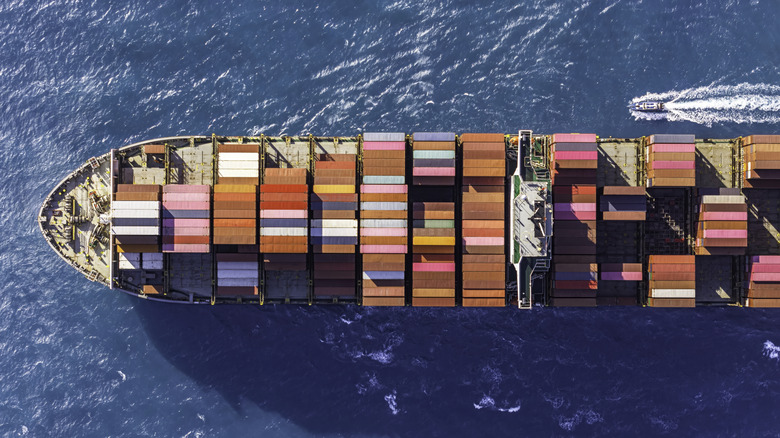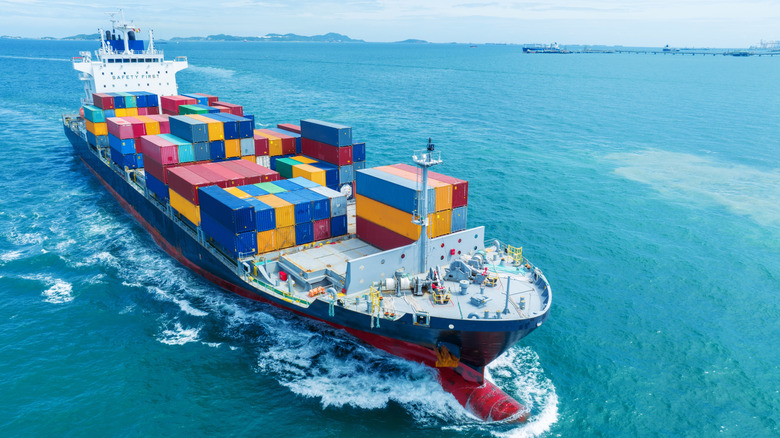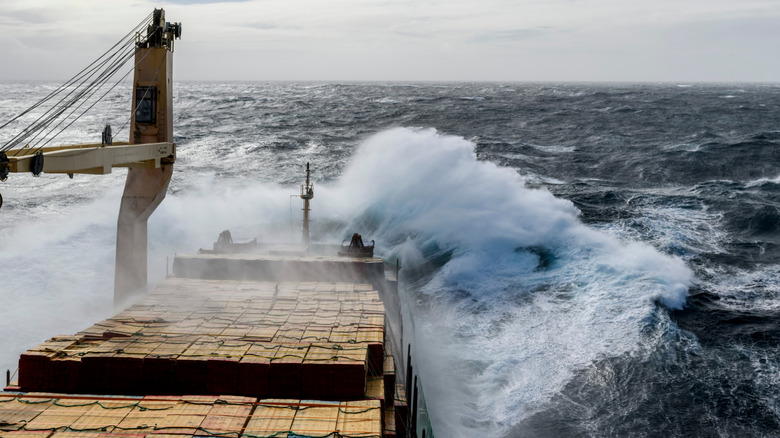How Long Does It Take A Cargo Ship To Cross The Atlantic?
The Atlantic is the second-largest ocean after the Pacific, connecting the U.S., Canada, and Brazil on the western side to European and African nations like the U.K., Spain, Portugal, and Morocco on its eastern end. As these are some of the most frequently travelled destinations in the world, thousands of passengers cross the Atlantic daily, often by air. That said, transatlantic travel dates way back, even before Pan Am began operating the first commercial transatlantic airliner in 1939. Ships used to be the primary mode of transportation during the early 1900s and the route was travelled by some of the most majestic liners like the SS Bremen, SS Imperator. It was also the route taken by the RMS Titanic -– the "unsinkable" ship that sank on its maiden journey.
While passengers have mostly transitioned to airplanes for transatlantic travel, barring recreational cruise ships, the Atlantic waters are mostly occupied by cargo ships today. Ships can take anywhere from ten days to even a month to cross the Atlantic, with travel times depending on the ship's speed and weather, among other factors.
Cargo ships are relatively slow
A typical transatlantic journey is somewhere between 2,800 and 3,000 nautical miles (3,200 to 3,500 miles) depending on your start and end points. Cargo ship speeds average between 12 and 20 knots (14 to 23 mph), with most cargo ships never going beyond the 24 knot mark. Cargo ships typically cruise at seventy to eighty percent of their maximum speed to save fuel. A typical cargo ship can save up to a third of its fuel by reducing its speeds to 21 knots from 24 knots.
Apart from this, ships travel more slowly to reduce harmful emissions, including greenhouse gases like CO2. The shipping industry contributes to 3% of total greenhouse gas emissions, and reducing the speeds results in a substantial decrease in the emissions.
At these speeds, cargo ships typically take anywhere from ten to twenty days to cross the Atlantic, largely depending on the weather. On the other hand, cruise ships travel at higher speeds, averaging between 20 and 25 knots (23 mph to 29 mph), leading to a slightly shorter travel time of around fourteen days.
Weather plays a huge role in travel time
The Atlantic Ocean witnesses some of the highest hurricane activity during the hurricane season from June 1 to November 30 each year. During this period, the Atlantic sees frequent tropical storms and hurricanes, causing shipping to slow down. The winter months also have harsh seas, especially in the North Atlantic region. As cargo shipping happens throughout the year, the travel time for transatlantic cargo ships largely depends on the weather. During harsh weather, cargo ships use a variety of techniques, such as using weather routing systems and following local weather alerts to switch to safer paths. That said, these route changes can significantly slow down the ships, taking them longer to cross the Atlantic.
The period between November and May typically sees better weather and calmer seas. Cruise ships enjoy the luxury of travelling only during the good weather seasons, making them relatively faster and more punctual with their schedules.


